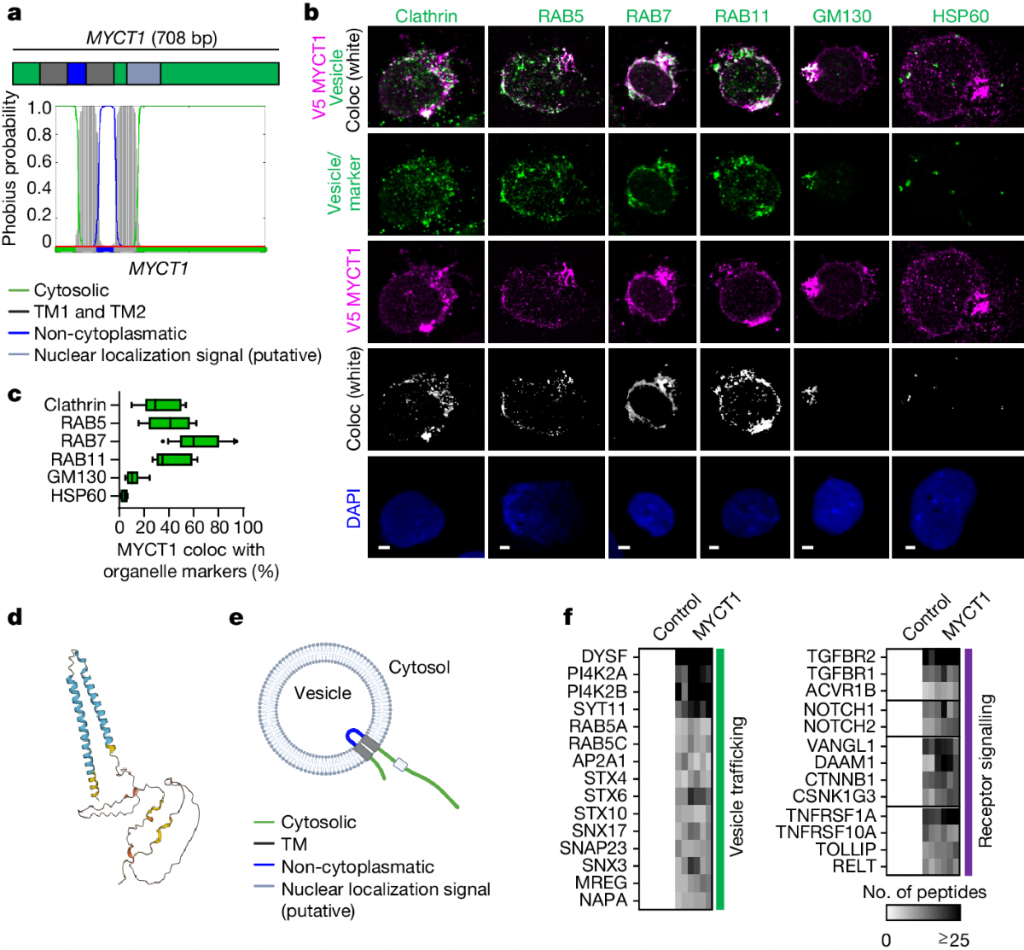Uncategorized Monday, 2024/07/01
In a new study, researchers from the University of California, Los Angeles discovered a protein called MYCT1 that plays a crucial role in regulating self-renewal by helping human hematopoietic stem cells (HSCs) perceive and interpret signals from their environment. This discovery brings scientists one step closer to the method of amplifying hematopoietic stem cells in laboratory culture dishes, making it easier to obtain life-saving hematopoietic stem cell transplants and improving the safety of hematopoietic stem cell-based therapies such as gene therapy. The relevant research results were published in Nature, under the title "MYCT1 controls environmental sensing in human haematopoietic stem cells".
Hematopoietic stem cells can replicate themselves through a self-renewal process and differentiate to produce all blood cells and immune cells in the human body. For decades, hematopoietic stem cell transplantation has been used as a life-saving therapy for treating leukemia and other blood and immune diseases. However, hematopoietic stem cell transplantation has significant limitations. Finding a matching donor may be difficult, especially for people of non-European ancestry, and the number of hematopoietic stem cells available for transplantation may be too small to safely treat the patient's disease.
Our Featured Products
| Cat No. | Product Name | Source | Species | Tag |
| MYCT1-1643H | Recombinant Human MYCT1 | Mammalian Cell | Human | His |
| MYCT1-5795H | Recombinant Human MYCT1 Protein, GST-tagged | Wheat Germ | Human | GST |
| MYCT1-6730HF | Recombinant Full Length Human MYCT1 Protein, GST-tagged | In Vitro Cell Free System | Human | GST |
| MYCT1-3553H | Recombinant Human MYCT1 Protein, His (Fc)-Avi-tagged | HEK293 | Human | His (Fc)-Avi |
| MYCT1-10292M | Recombinant Mouse MYCT1 Protein | Mammalian Cell | Mouse | His |
| MYCT1-5834M | Recombinant Mouse MYCT1 Protein, His (Fc)-Avi-tagged | HEK293 | Mouse | His (Fc)-Avi |
These limitations persist because hematopoietic stem cells extracted from the human body and placed in laboratory culture dishes quickly lose their ability to self-renew. After decades of research, scientists are very close to solving this problem.
Dr. Hanna Mikkola, co-author of the paper and member of the Center for Regenerative Medicine and Stem Cell Research at the University of California, Los Angeles, Eli and Edith Broad, said, "We already know how to create cells that look like hematopoietic stem cells and possess all their characteristics, but when these cells are used for transplantation, many of them still do not work; something is missing."
To identify the missing parts that hinder the full function of these blood stem cell-like cells, Julia Aguade Gorgorio, the first author and co-corresponding author of the paper, analyzed sequencing data to determine the genes that silence hematopoietic stem cells when placed in laboratory culture dishes. One of the genes, MYCT1, is crucial for the self-renewal ability of these cells.

They found that MYCT1 regulates a process called endocytosis, which plays a crucial role in how hematopoietic stem cells receive signals from the environment telling them when to self-renew, differentiate, and be in a quiescent state.
Aguade Gorgorio, assistant project scientist at Mikkola Laboratory, said, "When cells perceive signals, they must internalize and process them; MYCT1 controls the speed and efficiency at which hematopoietic stem cells perceive these signals." Without this protein, signals from the cellular environment would shift from whispering to screaming, and these cells would suffer from stress and dysfunction
These authors compare MYCT1 to sensors in modern cars, which monitor all nearby activities and selectively transmit the most critical information to drivers at appropriate times, helping them make decisions such as when to safely turn or change lanes. If it weren't for MYCT1, hematopoietic stem cells would suddenly find themselves losing their guidance like drivers accustomed to relying on these sensors.
Next, these authors reintroduced MYCT1 using viral vectors to see if its presence can restore self-renewal of hematopoietic stem cells in laboratory culture dishes. They found that restoring MYCT1 not only alleviates the stress experienced by hematopoietic stem cells, allowing them to self-renew during the culture process, but also enables these expanded cells to effectively function after transplantation into a mouse model.
Next, these authors will investigate why MYCT1 gene silencing occurs, and then investigate how to prevent this silencing without using viral vectors, making it safer to use in clinical settings.
Mikkola said, "If we can find a method to maintain MYCT1 expression in hematopoietic stem cells after culture and transplantation, it will open the door to maximizing the use of all other significant advancements in this field. This will not only make hematopoietic stem cell transplantation more convenient and effective, but also improve the safety and affordability of gene therapy using these cells."
Reference Júlia Aguadé-Gorgorió et al. MYCT1 controls environmental sensing in human hematopoietic stem cells. Nature, 2024, doi:10.1038/s41586-024-07478-x.
Related Products and Services
CD Antigens Targets of CAR-T Cell Therapy Cytokines Cancer Drug Targets Immune Checkpoint Proteins Protein Interaction Service Protein Expression and Purification Services Drug Discovery Screening Protein Pathway Profiling
